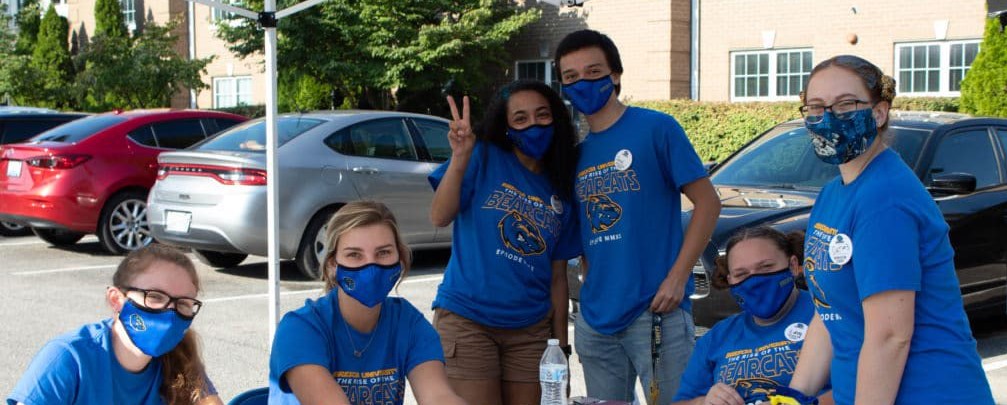
Child Welfare
School shutdowns highlighted the incredible importance of schools. Teachers are often the first to notice when children experience hardship. They can identify students that do not get enough food at home or are victim of abuse. Because of job losses and financial hardships during the pandemic, instances of child abuse may have increased. During school shutdowns, teachers only saw students through the computer screen. Consequently, they had a much harder time identifying childhood issues and providing assistance. In Kentucky, identifying instances of child abuse is especially important because the Commonwealth had the highest rates of child abuse in the nation for the past three years of data (fiscal year 2017-2019).1
Broadband
Online learning made broadband a mainstream issue. Broadband became as necessary to everyday life as electricity, yet many households in the GRADD region lack access. At times during the pandemic, all members of households required simultaneous internet access at in higher-than-normal capacities. To attend virtual classes, students and teachers needed reliable broadband, both downstream and upstream. In the past, broadband availability focused on download speeds. With the sudden increase of Zoom and other video software, upload speeds became as important as download.
Some schools provided students with Chromebooks and hotspots. Other students who did not have hotspots had to find ways to get to Wi-Fi hotspots set up sporadically across their communities or hope to check out hotspots from local public libraries. Getting to Wi-Fi locations involved adults providing transportation which exacerbated the childcare issues heightened by the pandemic.
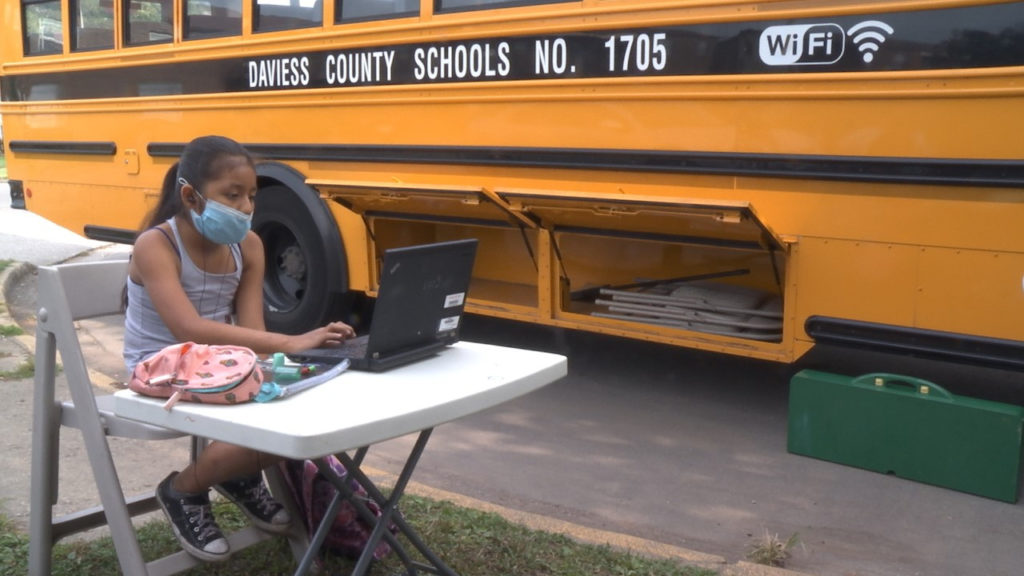
Childcare
When the kitchen table became the classroom, school-aged children required supervision that teachers normally provided. With many daycares closed or operating at lower capacity, parents stayed home from their jobs or found other childcare options for their younger children. Local officials across the region expressed concern about the lack of childcare options. School and daycare closures impacted parents’ ability to perform their job duties. Childcare issues negatively affect the careers of mothers more than fathers. According to data from the U.S. Census Bureau, women between the ages of 25 and 44 are nearly three times as likely as men to not work due to childcare demands.1
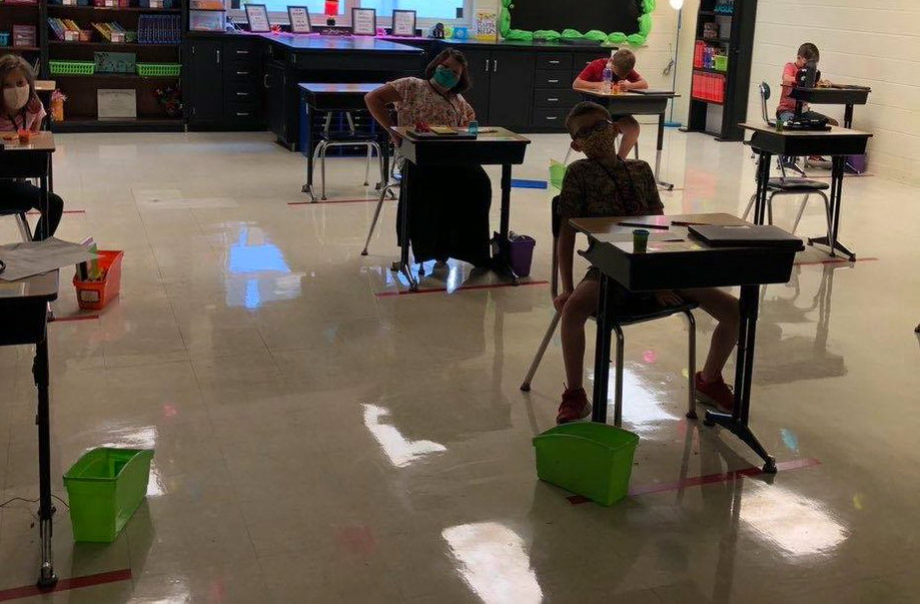
Union County Public School System encourages in-class learning and social distancing through the placement of desks. Photo from the Union County Public Schools Facebook Page
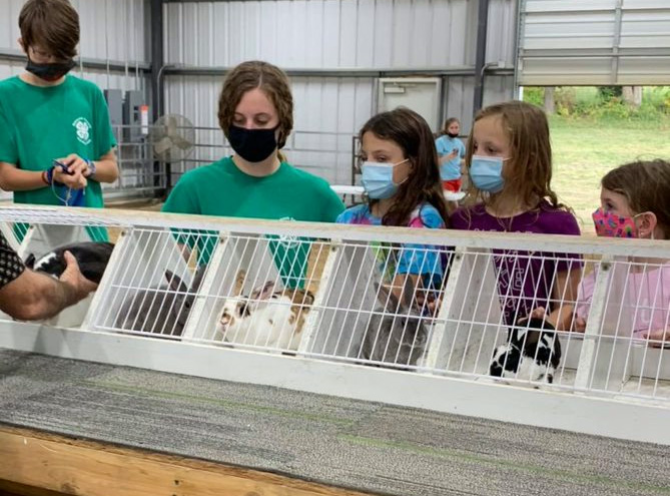
Hancock County 4-H puts on their 2020 County Fair rabbit Show at the Hancock County Fairgrounds. Photo from the Hancock County Fairgrounds Facebook Page.
Athletics
The COVID-19 pandemic drastically impacted high school athletics across the region. When the pandemic began in March 2020, all spring season sports canceled their remaining schedules at the order of the governor and the Kentucky High School Athletic Association (KHSAA). Seniors across the region ended their high school athletic careers much earlier than anticipated.
KHSAA worked with state legislation to allow fall sports in 2020. However, there were many restrictions to comply with social distancing policies put in place by Governor Beshear. Limited practices for football, cross country, and soccer were to start on August 24th with wrestling and basketball to begin practice on December 14th. Athletes and staff were to follow the mask mandate whenever not actively participating in their sport. Fans were informed to social distance at games or matches. The 2021 spring season saw a return to normalcy as restrictions lifted and students could compete again.
Sports tourism is a major economic driver in the GRADD region. The center for sports tourism in the region is Owensboro, with youth tournaments historically generating the most revenue. One cancelled event, the United Soccer Spring Cup, had 100 teams scheduled. According to tourism projections, the Spring Cup could have generated $600,000 in economic spending. Attendees needed an estimate of 1,500 hotel rooms to stay in the area for two nights, which alone would have brought in around $300,000. This example shows the revenue loss from tournaments cancelled March through June 2020.
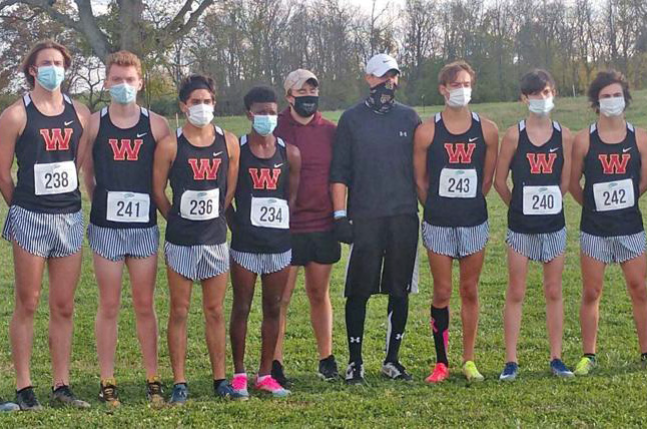
While keeping with mask regulations, the Webster County Boy Cross Country team was able to place third in the state. Photo from Webster County Board of Education Facebook Page.
Meals
The National School Lunch and Breakfast programs continued operation under non-traditional instruction (NTI). School buses transported meals instead of students across the GRADD region. Meals were dropped off at students’ houses or delivered to locations more central to a greater number of people.
During the new 2020/2021 school year, meals were available for delivery or pickup for students learning virtually. For other students doing a mix of in-person and virtual, meals were often sent home with them for the days they would be home. Schools were required to provide meals to all students who wanted them, regardless of each student’s free or reduced status.
Colleges and Universities
The biggest change for colleges and universities during the COVID-19 pandemic was course delivery. At the beginning of the outbreak, most colleges sent students home for spring break to stay until further notice. Professors, like K-12 teachers, had to immediately make their classes virtual and provide online final exams. Many students returned to campus in the fall of 2020 with university administrations encouraging masks and social distancing and discouraging large gatherings and parties.
Locally, Kentucky Wesleyan College encouraged students, employees, and visitors to fill out a daily health check form every day they were on campus. The college’s website had a COVID-19 tracker of both active and cumulative cases across the campus.
Faculty could conduct classes in-person or virtually. Over the summer of 2020, every single student was called by the college to gauge their thoughts on the situation. enrollment in Fall 2020 was the highest in years. Online enrollment doubled and residence halls were full.
Brescia University also did a mix of in-person and virtual instruction, giving faculty and students options to make them comfortable. The traditional on-campus population was stable for the 2020/2021 school year, but concerns existed for the 21/22 year. High school seniors proved to be reluctant with their inquiries, applications, and FAFSA. Brescia made the ACT and SAT optional on a case-by-case basis for the 20/21 school year but made it optional for all for the 21/22 year. After waiving these tests, the school saw an increase in applications.
At Owensboro Community Technical College (OCTC), students had to be on-campus at times due to the large skilled trades curriculum. Students took the lecture portion of their classes online and went to campus solely for hands-on technical training. That way, OCTC kept track of the number of students on campus at any given time. OCTC noted the pandemic made people uncertain about their futures, and many held off going back to school. The undecided students tended to wait. Students who knew exactly what program they wanted to do stayed steady. There was not much of an enrollment decline in Fall 2020. The decline in keeping with the national trend for community colleges was greater in Spring 2021.
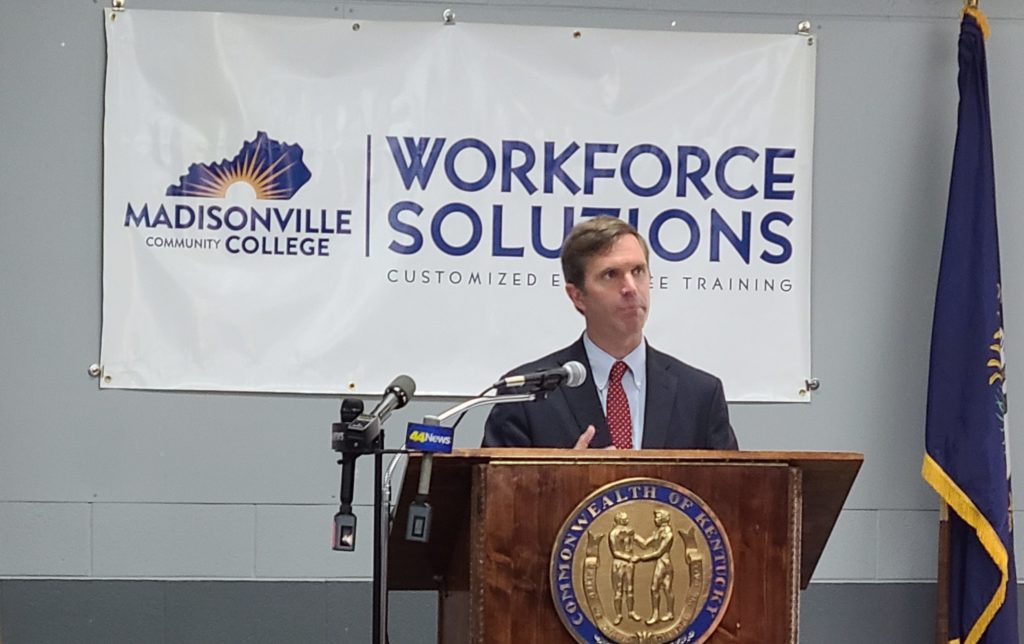
In 2020, Webster and Union Counties partnered with Madisonville and Henderson Community Colleges to apply for grants to purchase property for an expanded CDL and utility lineman training facility. Governor Beshear, photographed here, announced the CDBG funding on April 28, 2021.
